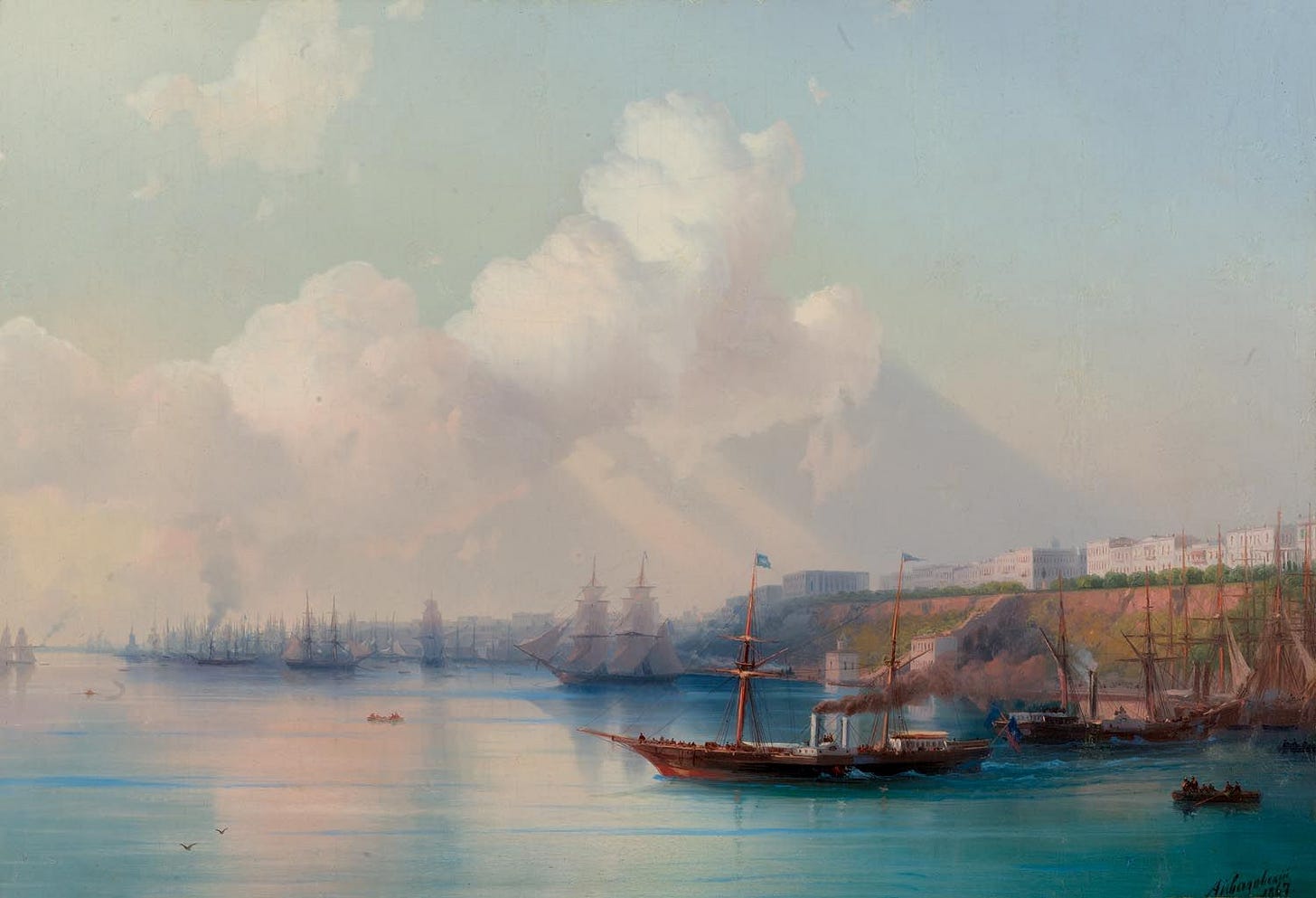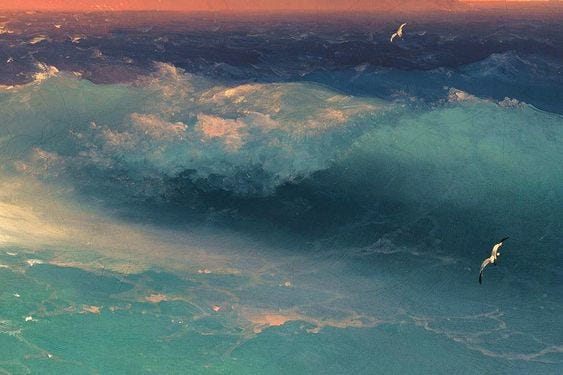Ships Create the Rhythm of Adventure
Adventure is a very general term, but I think of it as a narrative that comes from intentionally striving towards wonder. An epic journey may start out of necessity, but it doesn’t become an adventure until someone embraces their inner adventurous desire.
Good adventures need both stress and stability. The ideal adventure protagonist has a stable life: not stable in any specific sense, but just disappointingly consistent in some way. This is where that adventurous desire comes from! Stress is needed to light the fire of adventure, but without stability there is no fuel.
Because of this, good adventures also require a home base. This can be as simple as a traveling caravan (Lord of the Rings) or as complicated as a flying city (Howl’s Moving Castle), but it must persist throughout the story as a dependable, safe environment. An adventurer needs a home base to play a countermelody for the stresses of their travels. Otherwise their journey will become muddled: all stress and no stability. It will lack the rhythm of adventure.
A ship excels as an adventurer’s home base because sailing has natural rhythms of stress and stability. Stormy skies break up fair weather. Risky voyages break up stays at port. Choppy waves break up calm water. So adventures at sea have polyrhythms, where the waves of the ocean and the waves of the journey come together in harmony.
Stays at port are especially useful, since they effectively function as “sub-adventures”. Ports exist in seafaring cultures, so voyagers are still “at sea” when they come ashore. This allows them to inhabit a temporary home base in a way that remains cohesive with their maritime journey. Even though a stay at port represents a time of stability, it still contains rhythms of stress that accent the adventure.
Air travel doesn’t create this same rhythm. Once a pilot lands, they’re not “in flight” anymore; multi-leg journeys feel like disjoint trips rather than parts of a cohesive whole. There are no equivalent “skyfaring” cultures and “sky ports” for air travel.
There’s also the matter of spontaneity. Voyages give the voyager freedom to pursue whimsical detours for the sake of adventure. If a friendly ship appears on the horizon, sailing over to say hello is pretty straightforward. The constraints of flight do not afford pilots that same luxury. Whimsical detours just aren’t realistic during a fierce battle with gravity. Even the length of a flight is capped by the supply of fuel.
People remain stubborn about this reality. Even though modern flight turned out to be rather unromantic, humanity still dreams of adventuring “at sky”. That’s where the airship comes in, a vehicle that has remained relevant in fiction by channeling this fantasy. “Airship” usually refers to a vehicle like a zeppelin, but I’m using it to mean any flying vehicle that somehow hearkens back to the sea.
The most iconic airships are perhaps the spaceships from Star Wars. The terms “Star Wars” and “spaceship” have become so iconic that we rarely perceive their original compound meanings. But just as Star Wars is “wars among the stars”, spaceships are “ships in space”: vehicles claiming descent from the sea. And just like their nautical ancestors, spaceships are usually tasked with creating that rhythm of adventure.
In the original Star Wars trilogy, that rhythm of adventure is created by the Millennium Falcon. Its cozy interior and lived-in charm makes it an ideal home base for exploring the galaxy. If Star Wars didn’t have the Falcon, the story would not have worked. And the Falcon is only able to facilitate an adventure “at sky” because futuristic technology (hyperspace, spaceports, floating cities) makes a voyage-like experience possible.
In order to appreciate the necessity of the Falcon, consider the Star Wars prequels. The prequels have an overarching story of political intrigue that is complex, but not fatally flawed. But since they lack an airship like the Falcon, the prequels leave most viewers too disoriented to untangle the narrative. The prequels are fascinating, but they are scarcely adventure films— a far cry from that trilogy about a boy and a dream.1
My favorite airship is from Everblue, a webcomic by Michael Sexton that represents the aesthetic opposite of the Star Wars prequels. Everblue is about a shipwright named Ten who crashes his airship into the docks of a sleepy ocean village. This introduces him to a girl named Luna, who is drawn in by his wholesome adventurous spirit.
While the ships of the prequels get lost in a haze of geopolitical conflict, the ship in Everblue is a focal point that just is. The story begins not with convoluted interstellar trade negotiations, but the joys of ship maintenance. And just like Luna, the reader is drawn in by Ten’s pure and endearing thirst for novelty.
I only read ~100 pages of Everblue, and it went on indefinite hiatus2 shortly after. But it really stuck with me, and this is likely because Everblue leans into adventure in such a pure way. Most stories I read then were more like the prequels, wrapping adventure in a package of lore and world-building. But in Everblue, the adventure just is. All else was clearly secondary.
I’m sure Everblue would have revealed more lore as it continued, and I’m sure that that lore would have been satisfying. Even today, I sometimes wish that I had gotten to see it. But I also appreciate how Everblue is crystallized in my mind as the Platonic ideal of adventure without pretense. I can’t say I cared too much about the mechanics of the Everblue universe. I was just excited to be taken along for the ride.
Everblue and the original Star Wars demonstrate the rhythm of adventure, but they also demonstrate the joy of a simple story. When Star Wars came out, it was very different from the sprawling universe that it has become. The story may have been the same, but it was just that: a story. I often wonder what it would have been like to watch Star Wars then, free from the mountains of lore and pretense that surround it today.
The zeitgeist is represented by films like Across the Spider-Verse, a movie that riffs on entire decades of lore. In “prestige TV”, the preferred narrative is countless plotlines, twisting and joining in unexpected ways. Modern media demands serious dissection and analysis. Stories must be more than what they seem.
These types of stories are valuable in their own ways. But in today’s hyperstimulating media landscape, a simple story done right is refreshing. Sometimes a ship and the rhythm of adventure is all you need.
In the years since, Star Wars has become far more than a trilogy of adventure films. While original fans gravitated towards Star Wars because of the adventure, today’s fans are in it for the ever-expanding lore. By this standard, the prequels seem like a triumph while the adventure-oriented but unoriginal Episode VII seems like a colossal failure. These clashing expectations explain why recent films have been so polarizing. New fans hated the sequels because it ruined their lore. Old fans hated the prequels because it ruined their adventure.
It seems that Everblue has continued to update on its original website, just at a very sporadic rate. I’ll be interested to see if it continues!









